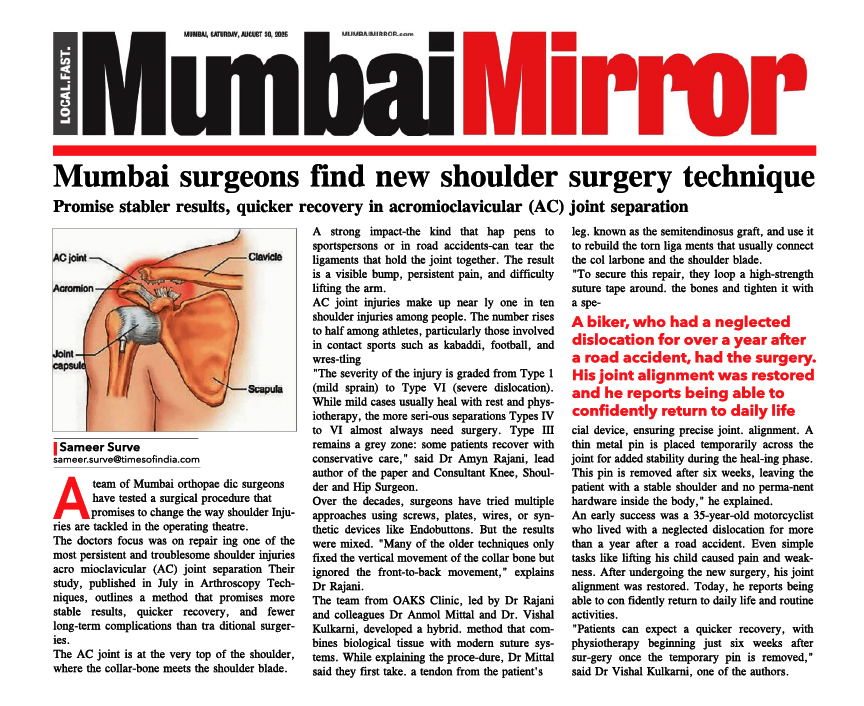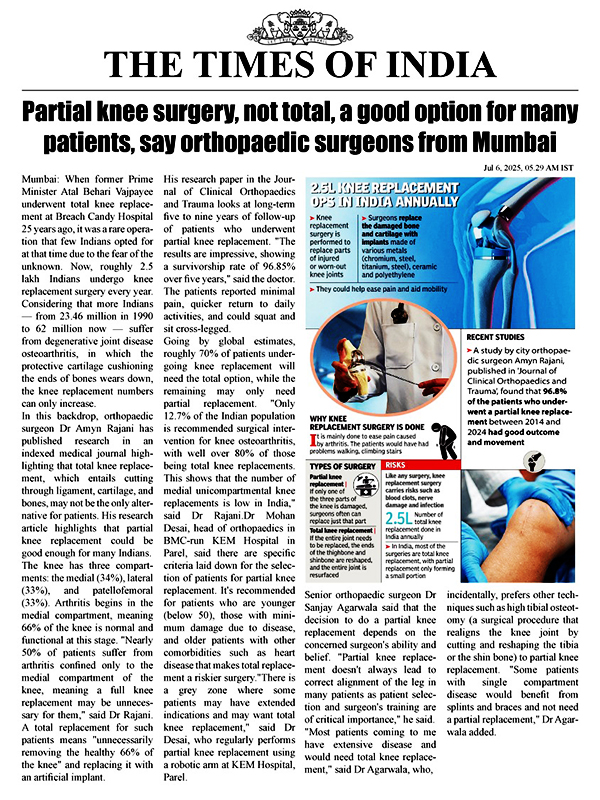Introduction
Knee replacement surgery, or total knee arthroplasty (TKA), is a life-changing procedure for patients suffering from chronic joint pain. However, obese patients undergoing knee replacement surgery face a higher risk of wound healing complications, such as wound dehiscence, delayed healing, and surgical site infections. To address these challenges, a pioneering technique known as retention stitches for wound closure has shown remarkable promise.
In a clinical study led by Dr. Amyn M. Rajani, a leading joint replacement and arthroscopy surgeon in Mumbai, India, this novel technique has demonstrated zero post-surgical wound complications in obese patients.
The Problem with Traditional Wound Closure in Obese Patients
Patients with a Body Mass Index (BMI) over 30 are considered obese. In such patients, the increased soft tissue around the knee joint places extra tension on surgical incisions, increasing the risk of:
- Wound dehiscence (wound reopening)
- Serous discharge or persistent drainage
- Delayed rehabilitation due to wound-related complications
This makes it essential to develop and adopt more robust wound closure techniques tailored for obese individuals undergoing total knee replacement.
What Are Retention Stitches?
Retention stitches are additional, deep sutures placed at a distance from the main surgical incision. They are reinforced using materials like infant feeding tubes to distribute tension and prevent the sutures from cutting into the skin.
This technique:
- Offloads tension from the primary wound site
- Minimizes chances of wound opening or infection
- Supports secure healing without compromising mobility
Clinical Study Highlights
✅ Study Details
- Conducted at OAKS Clinic, Mumbai
- 27 obese patients (BMI > 30)
- Underwent TKA with robotic-assisted technology
- Retention stitches applied during wound closure
- Follow-up period: 6 months to 5 years
✅ Outcomes
- Zero cases of wound dehiscence or delayed healing
- No infections, necrosis, or suture-related skin damage
- Standard rehabilitation followed—no delays in physiotherapy
- All patients achieved satisfactory healing and recovery
Why This Technique Works
Retention stitches reduce mechanical stress on the primary suture line, especially in obese patients where fatty tissue creates downward pull. The use of feeding tube sheaths or rubber bolsters further distributes pressure and prevents skin trauma. This simple yet effective strategy enhances surgical safety and efficiency.
Advantages of Retention Stitch Closure Technique
|
Feature
|
Benefit
|
|
✅ Low-cost solution
|
Uses standard sutures & materials available in most operating rooms
|
|
✅ Minimizes complications
|
Proven zero dehiscence and infection rate in study
|
|
✅ Quick learning curve
|
Easily adoptable by orthopedic surgeons
|
|
✅ Suitable for high-BMI patients
|
Specifically targets surgical risks in obese population
|
|
✅ Improves patient outcomes
|
Supports timely recovery and return to mobility
|
A Step Forward in Obesity-Aware Surgical Practices
As obesity rates climb globally, surgeons must adapt their techniques to suit the changing patient demographics. Retention stitch wound closure represents a proactive, evidence-based approach to minimize complications in knee replacement surgery for overweight and obese individuals.
Expert Opinion: Dr. Amyn Rajani’s Contribution
Dr. Amyn Rajani, a respected name in robotic knee replacement and arthroscopy in Mumbai, is the lead author of the study. His team’s contribution offers a game-changing addition to surgical protocols that is both cost-effective and highly efficient. His clinic, OAKS Clinic, is known for pushing boundaries in orthopedic care.
Conclusion
The retention stitch technique is a simple, innovative, and highly effective wound closure method that drastically reduces post-operative complications in obese patients undergoing total knee arthroplasty. As surgical outcomes continue to improve with technological advancements like robotic surgery, complementary techniques like this ensure safer, faster recovery for high-risk patients.
If you are a healthcare professional looking to improve patient outcomes in orthopedic surgery, or a patient researching safer options for knee replacement with obesity, this technique is worth your attention.





